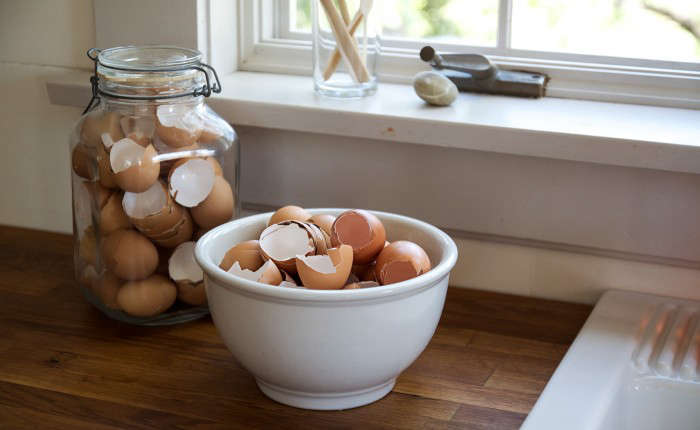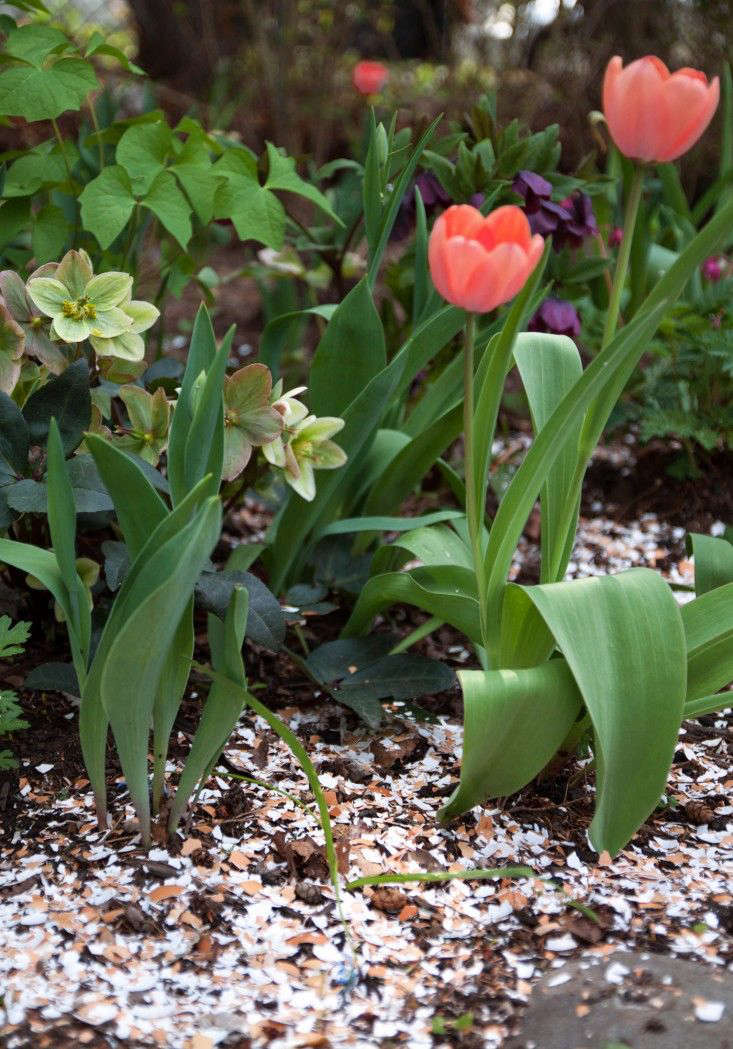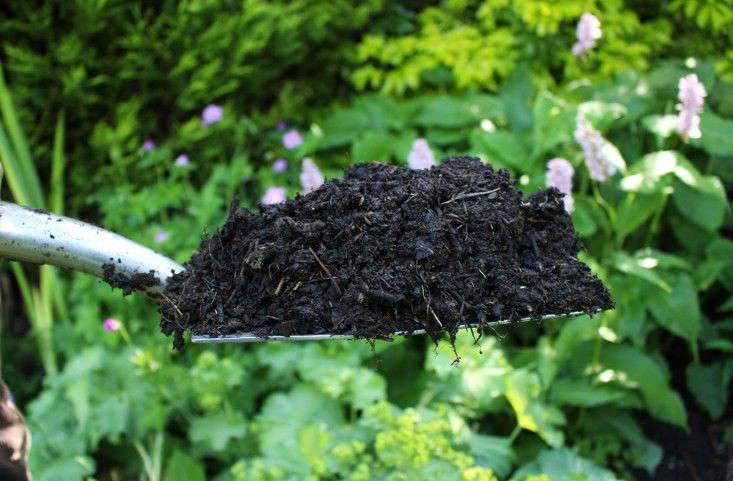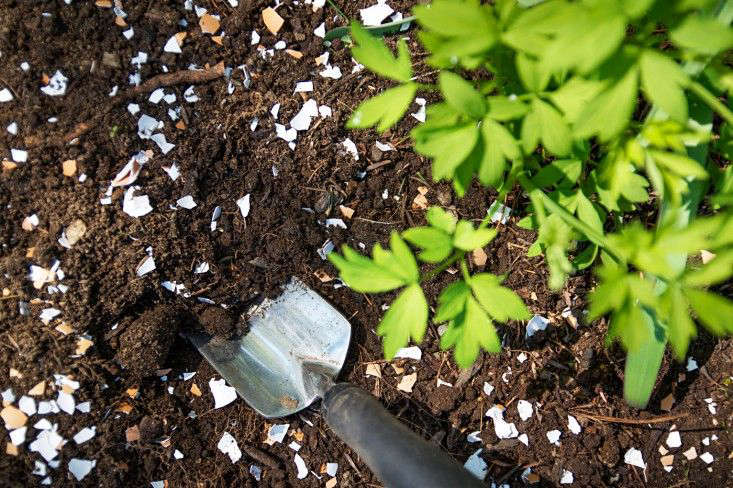How To Safely Use Eggs In Gardens
Last fall I started collecting eggshells after I read an article on Real Farmacy that touted their usefulness in the garden for everything from fertilizer to organic pest control. This spring I'm using the crushed eggshells in the garden five ways.
Photography by Justine Hand for Gardenista.

When my containers are full, I set the kids to pulverizing them into little bits with wooden spoons, thus compacting the shells so that I can collect more.
Fertilizer

Though nitrogen, phosphorus, and potassium are most vital for healthy growth, calcium is also essential for building healthy "bones"—the cell walls of a plant. Composed of calcium carbonate, eggshells are an excellent way to introduce this mineral into the soil. To prep the eggshells, grind with a mixer, grinder, or mortar and pestle and till them into the soil. Because it takes several months for eggshells to break down and be absorbed by a plant's roots, it is recommended that they be tilled into the soil in fall. More shells can be mixed into your soil in the spring.
By the same token, finely crushed shells mixed with other organic matter at the bottom of a hole will help newly planted plants thrive. (Tomatoes especially love calcium.) For an exciting recycled garden cocktail, try mixing your eggshells with coffee grounds, which are rich in nitrogen.
Finally, eggshells will reduce the acidity of your soil and help to aerate it.
Seed Starters

Next, with a nail or awl, make a hole in the bottom for drainage. Add soil and seeds according to the packaging. When sprouts appear, plant them—egg and all—right into the soil. See a complete DIY at 17 Apart.
Pest Control

Apparently you can also use egg's insides to deter deer. See DIY: Homemade Deer Spray. Be aware, however, that while deer hate the smell of eggs, rodents love it. Therefore, it may not be best to use this deterrent near the house.
Many gardeners also tout the use of crushed eggshells as a snail and slug repellent. But a recent test by All About Slugs in Oregon seems to have dispelled this. If you've had any success with eggshells as slug repellent, we'd be curious to know.
Bird Food

Mulch

Looking for more recycled garden how-tos? See our guide to Edible Gardens 101 and more posts:
- Dirty Secret: 10 Ways to Improve Garden Soil
- Seafood for the Garden: Make Your Own Organic Fertilizer
- Gardening 101: How to Use Fallen Leaves
- How to Sprout Seeds and Grow a Compost Garden
EXPLORE MORE: Issue 51: Homesteaders, DIY Projects, DIY, Gardening 101, Composting, Recycled, Organic, Soil & Fertilizers, Birds, Eggs, Mulch, Insects, Seeds
How To Safely Use Eggs In Gardens
Source: https://www.gardenista.com/posts/diy-5-ideas-to-use-eggshells-in-the-garden-pest-control-mulch-fertilizer/
Posted by: hulettsircurnis.blogspot.com

0 Response to "How To Safely Use Eggs In Gardens"
Post a Comment